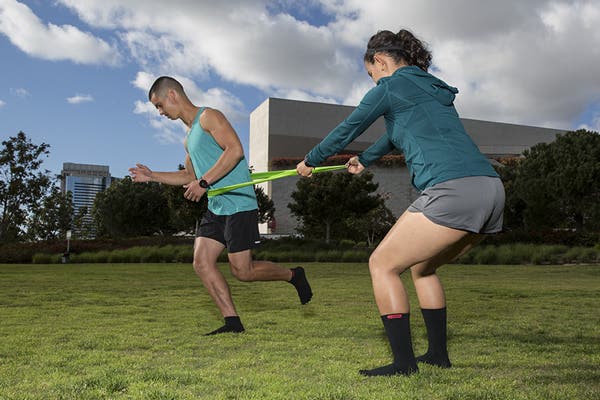So you’ve put in the tough work at the gym—you pushed yourself and your muscles, and now you’re heading home. But did you make sure that you’re setting yourself up for a solid recovery? We’ve all experienced that sneaky second day soreness, and no one likes it. While it may make you feel like you’ve put in a great workout, wouldn’t it feel better if you could go back to the gym and keep hitting your goals?
With these workout recovery tips, you can!
1. Warm Up
The best tactic for recovery? Preparation. Make sure that your muscles are ready for your workout with a dynamic warm up routine. Dynamic warm ups (when you warm your muscles up through movement instead of posed stretches) is thought to be better for you and your performance. By warming up your body through motion, you help prep your muscles for the activity you’re about to complete. The goal is to increase your heart rate gradually, easing your body into your activity. Not sure where to start? Try this warm up from Greatist.
2. Cool Down
Once you’re finished with your workout, make sure you allow your muscles to cool down properly. While dynamic stretching is great for before your warm up, static stretches (holding a pose for a longer amount of time) are often more helpful after you’ve worked out. Remember to decrease your heart rate slowly, just like you increased it gradually during your warm up. Try a few of these favorite stretches if you’re feeling stuck.
3. Roll Things Out
Whether right after your workout or the following day, one great way to help your muscles recover is with a good foam rolling session. And the great news? New research shows it doesn’t have to hurt to be effective! You can use a larger foam roller for bigger muscle groups or try a smaller, handheld roller if that’s more comfortable. Some even come with textured wraps, so you can customize the level of massage even more.
4. Try Kinesiology Tape
You may have seen this stretchy, cotton-fiber tape on your favorite pro athletes, but that doesn’t mean you can’t benefit from it too. When applied in specific patterns on your skin, it can help relieve pain from sore muscles and joints for days at a time. Plus, you don’t have to take it off to shower, swim or continue your workouts. Just make sure you use a reputable brand and check out how to properly apply it based on where you have pain (YouTube has you covered).
5. Use Temperature Therapy
When it comes to sore muscles and joints, why mess with the old faithfuls? Heat and cold therapy have been used for ages, and that’s for a reason—they work. For newer injuries that still have swelling, start with cold therapy. You can use traditional ice, a gel ice pack or even a cold therapy topical pain reliever. Once the swelling has gone down, you can use heat therapy (we like Epsom salt soaks or hot packs for heat!) to relieve your pain. Some people find that heat or cold therapy only intensifies their pain, so make sure you use what works for you.
6. Add Compression
Whether it’s a sleeve, an old-school Ace bandage or high-tech toesocks, compression is thought to help with muscle fatigue and recovery. Just wear your favorite compression garment while you work out and even after, and feel the effects. You can even wear your compression on your rest day, to help your recovery continue.
At the end of the day, it’s all about you, though. Find what recovery tactics work for you (and understand they may be different based on what activity you’ve been doing). It may take a little trial and error, but don’t give up! When you find the recovery routine that works for you, you’ll be able to focus on making your workouts (and yourself) even stronger.









